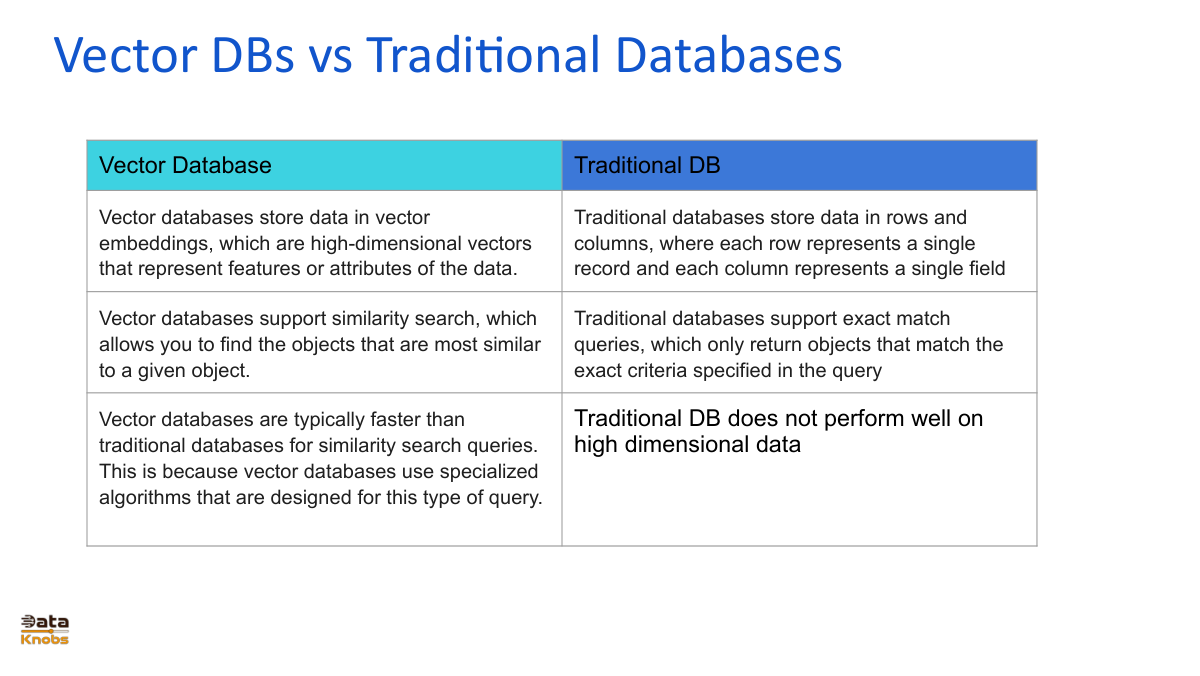Vector DB vs Traditional DB | Slides

Vector Database vs Traditional Database: A Comparative AnalysisDatabases are a fundamental component of modern software systems, and their design and functionality have evolved over the years. Traditional databases and vector databases serve different purposes and cater to unique use cases in the data-driven world. Below is a comparative analysis of vector databases and traditional databases to highlight their differences and implications.
Implications
|
||||||||||||||||||||||||||||||